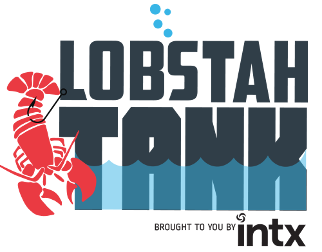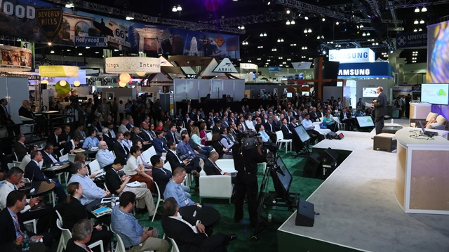INTX Compresses Schedule
BOSTON—Call it the “compression convention.”
In just 50 hours, from11 a.m. Monday, May 16, to 1 p.m. Wednesday, May 18, the Internet & Television Expo (INTX) will cram conferences, new super sessions, the Spring Technical Forum plus policy and financial analyses into an agenda that will unfold on stages and meeting areas situated within the exhibit hall floor at the Boston Convention Center.
The National Cable & Telecommunications Association, which runs INTX (formerly called “The Cable Show”), believes the integration of event sessions and exhibits will appeal to attendees (and exhibitors) plus support the industry’s effort to reposition itself in the broadband and technology ecosystem.
OPEN THE BOX
The agenda is laden with issues familiar to the cable industry, highlighted this year by the FCC’s controversial open set-top box rulemaking, the impact of mergers/ consolidation and the rollout of DOCSIS 3.1 (Data Over Cable Service Interface Specification, a core factor in cable’s migration from video to broadband data delivery). Speakers are also likely to address ongoing unease about ’net neutrality and privacy issues, fueled by recent FCC pronouncements.

In addition to traditional topics such as FCC and congressional policy, broadcast retransmission, broadband deployment, competitive marketing and programming tactics, the INTX agenda features hi-tech shout-outs, including a Boston-themed “Lobstah Tank” session, modeled on ABC-TV’s “Shark Tank,” where local entrepreneurs will pitch their media/telecom-centric ideas to potential investors. Also simmering on attendees’ minds will be OTT/S-VOD and the broadcast spectrum auction, which will affect the wireless plans of some cable operators, notably Comcast.
Barbara York, NCTA’s senior vice president for industry affairs, expects 9,000 attendees, about the same size crowd as last year in Chicago (and well below levels earlier this decade), reflecting industry-stagnating consolidation.
“It’s a floor-centric show,” she said. “We really want to take advantage of the energy that 9,000 people generate. Everything is all together all the time.” The main stage and 2,000 chairs for the convention’s one daily General Session will be “open to the light and sound” of the exhibit floor... not in a dark ballroom three floors away.”
In addition to condensing the venue’s layout, NCTA has compressed the overall agenda. In addition to the three general sessions (the format of which was still being developed in late March) and six new super sessions—each focusing on a specific topic—the agenda includes the Spring Technical Forum which will feature nine sessions (fewer than in previous years).
FCC Commissioners are expected to constitute one of the super sessions, while another will feature CTOs of cable operating companies and vendors, while yet another will include a discussion among Wall Street analysts.
FCC Chairman Tom Wheeler has been invited to present his views during a General Session. CEOs of major cable operating companies, program suppliers and hardware suppliers are also expected to chat about their outlooks during these sessions, although York promises some “innovative surprises” in the structure of those hour-long on-stage conversations.
Congressional staff members, mostly from pertinent committees such as Commerce and Judiciary, will converse in the less formal setting of “Imagine Park,” a stage within a casual section of the show floor that will host almost-hourly presentations and pitches about new technology products and marketing issues.
“INTX Talks” is the new name for 16 panel discussions, formerly called “education sessions,” that will be held in meeting rooms constructed around the exhibit hall floor. Topics will include next-generation wireless networks, content discover/navigation, big data, OTT content and platforms, video advertising, modernized media measurement, and business communications. INTX Talks will also focus on the impact of the post-millennial generation and “PewDiePie Nation: Behind the Astonishing Rise of the Multichannel Network.”
As part of the redesign, the INTX show floor will include a large area called “The Lawn,” which York describes as a “social epicenter, a front door to the general session stage, a bridge between the exhibits and the big learning.” The Lawn covers five percent of the show floor and will include branded activities, charging stations for mobile devices plus food.
The “Lobstah Tank” entrepreneurial “pitch competition” on Tuesday in Imagine Park replaces the hackathon that NCTA has run for the past few years. It will feature a cash prize and is intended to showcase cable-related ideas.
THE EXHIBIT FLOOR
About 250 exhibitors will show their wares, about the same number as last year, York says. About 20 companies will be first-timers, showing products and services such as big data analytics (Guavus Inc.), multiscreen IPTV platform (Perception TV Ltd.), media optimization (Beamr), home security (Alarm.com) and media intelligence solutions (Volicon). Among the first-time exhibitors is Verizon Digital Media Services, marking a rare instance when NCTA has allowed a unit from the rival telco industry onto its exhibit floor.

Congressional staff members, mostly from pertinent committees such as Commerce and Judiciary, will converse in the less formal setting of “Imagine Park,” a stage within a casual section of the show floor that will host almost-hourly presentations and pitches about new technology products and marketing issues.
“Tek Stadium,” a collection of new technologies curated by Cable Television Laboratories, will also occupy a section of the show floor. Although CableLabs had not yet confirmed the line-up of exhibitors or topics at presstime, they are expected to include substantial wireless and expanded WiFi capabilities, based on the industry’s attention to such capabilities. At the recent Mobile World Conference, CableLabs President/CEO Phil McKinney focused on cable’s role in emerging 5G and unlicensed spectrum ventures.
“Intersections,” another new feature taking up space on the show floor where the main aisle cross, will provide two showcase areas, each with about eight to 12 curated demonstration kiosks of emerging technology. “Disruptive Reality” will bring virtual reality device makers, content creators and networks into one area. (A companion panel session in Imagine Park will examine bandwidth capabilities factors for VR.) The other Intersection area, called “It’s All TV,” will feature managed content services and video apps from cable operators and third-party providers (possibly Roku or Apple TV).
“The point of this showcase is that the future of TV is apps and the marketplace is working just fine,” explains Mark Bell, vice president of industry affairs for NCTA. Observing that the Intersection showcases support a theme that runs through INTX, Bell said that “the Internet is harnessing disruption, turning today’s chaos into tomorrow's growth.”
Evidence about cable’s shift from video-centric service to broadband data permeates the agenda for the Spring Technical Forum, starting with a two-part session on “Architecting the Networked Future,” focused on converted and virtualized networks and OFDM implementation, plus another two-part program on “The How and Why of Network Virtualization.” Other Tech Forum sessions examine “Approaches for Cognitive and Neural Functionality,” “Big Data Analytics and Implications for Content Delivery” and “Latency... Techniques for Improving the Internet Experience.”
Dan Pike, CTO for CGI Cable in Anchorage, AK, again chairs the committee that juries proposals for the INTX technical papers.
“Nearly 50 papers were selected, exploring the relevant technology trends as software displaces hardware, networks gain intelligence, and consumption migrates toward individuals,” Pike told TV Technology. “Architecture, protocol, and bandwidth enhancements, extensions, and migrations are discussed, as the industry technology continues to evolve to deliver more and better information and entertainment.
“Some of the most brilliant scientists and engineers in the world come to INTX to share ideas, explain concepts and advance the art of the possible,” Pike added.
Notably, hot topics from the video world such as 4K ultra high definition and virtual reality are not on the INTX Tech Forum agenda. Although both technologies require substantial bandwidth, Bell and Pike contend that the issues are being discussed in other technical arenas and did not fit into the INTX agenda this year. Bell acknowledged the continuing escalation of financial interpretation in some Tech Forum presentations.
“Engineering economics often proliferates in the Forum,” Bell said, observing that the costs of building and operating advanced technologies weighs heavily on the minds of cable technical executives.
RESPONSE TO INDUSTRY SHIFTS
“The TV industry is going through more disruption than ever before,” says Mark Lieberman, president/CEO of Viamedia, an independent cable representation firm and provider of online advertising services. “Operators are moving to skinny OTT bundles and finding themselves seeking alternative revenue streams while local advertisers want to ensure that they have a means to continue to reach consumers. In order to do this, operators are seeking technology solutions which can deliver local ads to local consumers. Just because consumer’s viewing habits change doesn’t mean their shopping habits will and advertising will still have to be a part of operators’ plans going forward.”
Others involved in INTX demonstrate the seismic shifts rocking the traditional cable oligopoly.
Dan Taitz, chief operating officer at Penthera, a young company focused on video delivery to mobile devices, characterizes mobility as “the most powerful trend in the video industry.” Penthera is owned by Michael Willner, who made his fortune when he sold Insight Communications, a large MSO, to Time-Warner Cable and Comcast four years ago.
Now Taitz sees consumers “demanding” the ability to view content online or offline “without the frustration of frequent buffering.” He says that Penthera will show its download solution for streaming video providers. Its customers include Charter, TWC, Comcast and several program suppliers.
Daniel Howard, a director at Hitachi Consulting Corp. (which works with large MSOs), expects deep examinations at INTX into topics such as “the major opportunity” in cellular backhaul service. He also points out that “LTE-U is still a significant concern for cable operators and CableLabs is working hard to ensure WiFi continues to be a sticky and high performing service over cable.” Howard notes that WiFi and MoCA [Multimedia over Coax Alliance format] in the home “are still challenged to distribute the gigabit speeds [cable is] delivering to the home this year,” but he foresees “lots of activity on both fronts.”
For more information on INTX, visit www.intxshow.com.
Get the TV Tech Newsletter
The professional video industry's #1 source for news, trends and product and tech information. Sign up below.
Gary Arlen, a contributor to Broadcasting & Cable, NextTV and TV Tech, is known for his visionary insights into the convergence of media + telecom + content + technology. His perspectives on public/tech policy, marketing and audience measurement have added to the value of his research and analyses of emerging interactive and broadband services. Gary was founder/editor/publisher of Interactivity Report, TeleServices Report and other influential newsletters; he was the long-time “curmudgeon” columnist for Multichannel News as well as a regular contributor to AdMap, Washington Technology and Telecommunications Reports; Gary writes regularly about trends and media/marketing for the Consumer Technology Association's i3 magazine plus several blogs.

